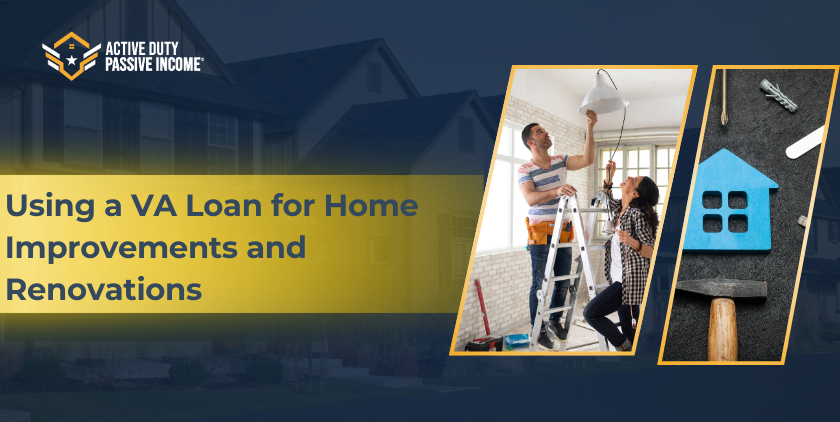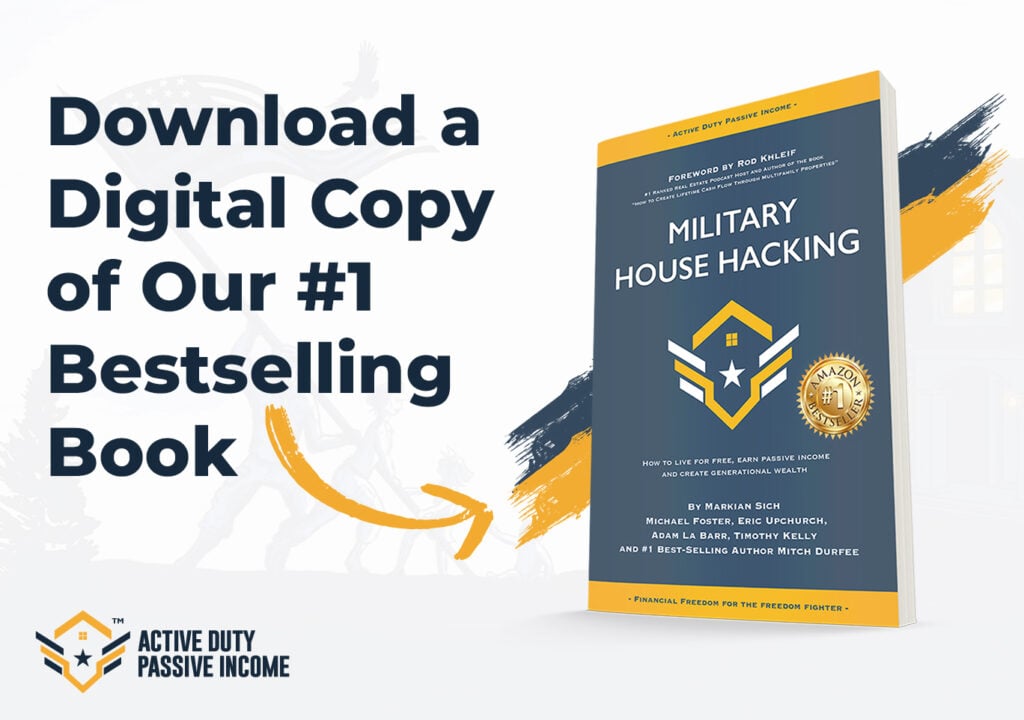Unlock the hidden potential of your home and elevate your living space with the power of a VA Loan for home improvements and renovations!
When it comes to financing home improvements and renovations, veterans and active-duty service members have a unique advantage: the VA (Veterans Affairs) Loan. The VA Loan is a powerful tool designed to help those who have served our country achieve the dream of homeownership, but its benefits extend beyond the initial purchase of a home. In this comprehensive guide, we’ll explore how you can use a VA Loan for home improvements and renovations, along with other financing options and tips for maximizing the value of your home.
Understanding the VA Loan
The VA Loan is a mortgage program offered by the U.S. Department of Veterans Affairs. It provides significant benefits to veterans, active-duty service members, and certain members of the National Guard and Reserves. Some key features of the VA Loan include:
- No Down Payment: One of the most attractive features is the ability to purchase a home with no down payment, making homeownership more accessible.
- No Private Mortgage Insurance (PMI): Unlike conventional loans, VA Loans do not require PMI, which can save borrowers hundreds of dollars each month.
- Competitive Interest Rates: VA Loans typically offer lower interest rates compared to conventional mortgages.
- Flexible Credit Requirements: The VA Loan program is more forgiving of past credit issues, making it easier for veterans to qualify.
Using a VA Loan for Home Improvements and Renovations
While VA Loans are most commonly associated with purchasing a home, they can also be used for home improvements and renovations. This can be done in several ways:
1. VA Cash-Out Refinance
The VA Cash-Out Refinance Loan allows you to replace your current mortgage with a new VA Loan that has a higher balance. The difference between the new loan amount and the existing mortgage balance is paid out to you in cash, which you can then use for home improvements or renovations. This option is ideal if you have significant equity in your home and want to leverage it to fund your projects.
Benefits of VA Cash-Out Refinance:
- Access to Equity: Tap into your home’s equity to finance large renovation projects.
- Maintain Low Interest Rates: VA Loans often have lower interest rates compared to other loan types.
- Potentially Lower Payments: Depending on your existing mortgage rate and terms, you might lower your monthly mortgage payments.
2. VA Renovation Loan
The VA Renovation Loan, also known as the VA Rehabilitation Loan, is specifically designed to help veterans and service members finance home repairs and improvements. This loan combines the cost of purchasing or refinancing a home with the costs of making repairs or improvements, all in a single mortgage.
Benefits of VA Renovation Loan:
- One Loan, One Payment: Simplifies the process by combining home purchase and renovation costs into one loan.
- Borrow More: Allows you to borrow up to the “as-completed” value of the home, which includes the estimated value after renovations are complete.
- Flexible Use: Can be used for a variety of improvements, from minor repairs to major renovations.
3. Energy Efficient Mortgage (EEM)
An Energy Efficient Mortgage is a type of VA Loan that allows you to finance energy-efficient improvements to your home. This can include installing solar panels, upgrading insulation, or replacing old windows with energy-efficient ones. The EEM can be added to your existing VA Loan, providing additional funds specifically for energy improvements.
Benefits of Energy Efficient Mortgage:
- Lower Utility Bills: Energy-efficient upgrades can significantly reduce your monthly utility costs.
- Increase Home Value: Green improvements can boost your home’s value and appeal to future buyers.
- Easy Financing: Incorporates the cost of energy-efficient upgrades into your mortgage, simplifying the financing process.
Other Financing Options for Home Improvements
While the VA Loan offers several avenues for financing home improvements, it’s worth exploring other options to find the best fit for your needs. Here are some additional financing options to consider:
1. Home Equity Loan or HELOC
A Home Equity Loan or Home Equity Line of Credit (HELOC) allows you to borrow against the equity in your home. Unlike the VA Cash-Out Refinance, these options do not require refinancing your existing mortgage.
- Home Equity Loan: Provides a lump sum of cash that you repay in fixed monthly payments over a set term. Ideal for large, one-time expenses.
- HELOC: Works like a credit card, giving you a line of credit that you can draw from as needed. You only pay interest on the amount you borrow.
Benefits of Home Equity Loan or HELOC:
- Flexibility: Choose between a lump sum or a revolving line of credit.
- Lower Interest Rates: Typically offer lower interest rates than personal loans or credit cards.
- Tax Deductible Interest: Interest paid on home equity loans may be tax-deductible, depending on how the funds are used.
2. Personal Loans
Personal loans are unsecured loans that can be used for a variety of purposes, including home improvements. While they generally have higher interest rates compared to secured loans like home equity loans, they can be a good option if you don’t have enough equity in your home or prefer not to use your home as collateral.
Benefits of Personal Loans:
- No Collateral Required: Since personal loans are unsecured, you don’t need to use your home as collateral.
- Fast Approval: Personal loans often have a quicker approval process compared to home equity loans.
- Fixed Payments: Typically come with fixed interest rates and monthly payments, making budgeting easier.
3. Government Programs and Grants
There are several government programs and grants available to help homeowners fund home improvements, especially those that promote energy efficiency or accessibility for individuals with disabilities.
Examples of Government Programs:
- FHA Title I Loans: These loans are designed for homeowners who need to make home improvements or repairs. They are not based on the home’s equity and can be used for a wide range of projects.
- Weatherization Assistance Program (WAP): Provides grants to low-income homeowners to improve energy efficiency and reduce heating and cooling costs.
- 203(k) Rehabilitation Mortgage Insurance: Offered by the FHA, this program allows you to finance both the purchase and renovation of a home with a single mortgage.
Tips for Maximizing Your Home Improvement Investment
When planning home improvements or renovations, it’s important to make strategic decisions to maximize the return on your investment. Here are some tips to help you get the most value from your home improvement projects:
1. Prioritize High-Impact Projects
Focus on improvements that will have the most significant impact on your home’s value and functionality. Kitchen and bathroom remodels, for example, often provide the highest return on investment. Additionally, consider projects that enhance curb appeal, such as landscaping or exterior painting.
2. Plan for Energy Efficiency
Energy-efficient upgrades not only reduce your utility bills but also increase your home’s value and appeal to environmentally-conscious buyers. Consider adding insulation, upgrading windows, or installing a high-efficiency HVAC system.
3. Set a Budget and Stick to It
Before starting any home improvement project, set a realistic budget and stick to it. Factor in unexpected expenses and plan for contingencies. Overspending can negate the financial benefits of the improvements.
4. Hire Qualified Contractors
Ensure that any work done on your home is performed by licensed and insured contractors. Check references, read reviews, and get multiple quotes to find the best professionals for your project. Quality workmanship is crucial for achieving the desired results and maintaining your home’s value.
5. Obtain Necessary Permits
Depending on the scope of your project, you may need to obtain permits from your local government. Failing to get the required permits can result in fines and may complicate future property sales. Always check with your local building department before starting any major renovations.
6. Consider Long-Term Benefits
When choosing home improvements, think about the long-term benefits for your lifestyle and your home’s value. Projects that improve the functionality, comfort, and safety of your home are often the best investments.
Conclusion
Using a VA Loan for home improvements and renovations is an excellent way for veterans and service members to enhance their living spaces and increase their home’s value. Whether you choose a VA Cash-Out Refinance, a VA Renovation Loan, or an Energy Efficient Mortgage, the VA Loan program offers flexible and affordable financing options.
Additionally, other financing options such as home equity loans, personal loans, and government programs can provide the funds you need to complete your projects. By prioritizing high-impact projects, planning for energy efficiency, and working with qualified professionals, you can maximize the return on your investment and enjoy a more comfortable and valuable home.
If you’re considering home improvements, take advantage of the benefits offered by the VA Loan program and explore all available financing options to find the best solution for your needs. With careful planning and smart investment, you can transform your home into the space you’ve always dreamed of.








